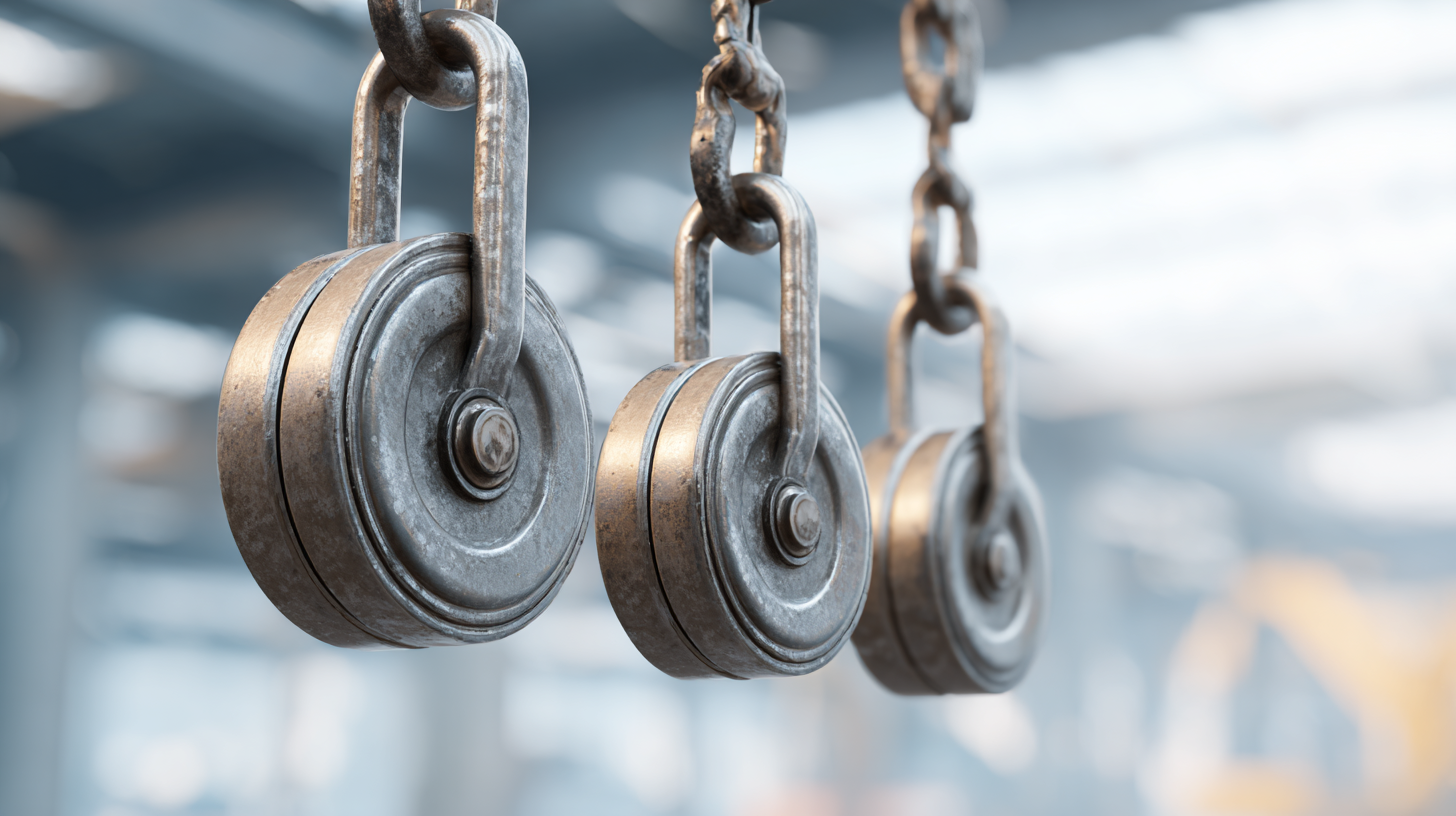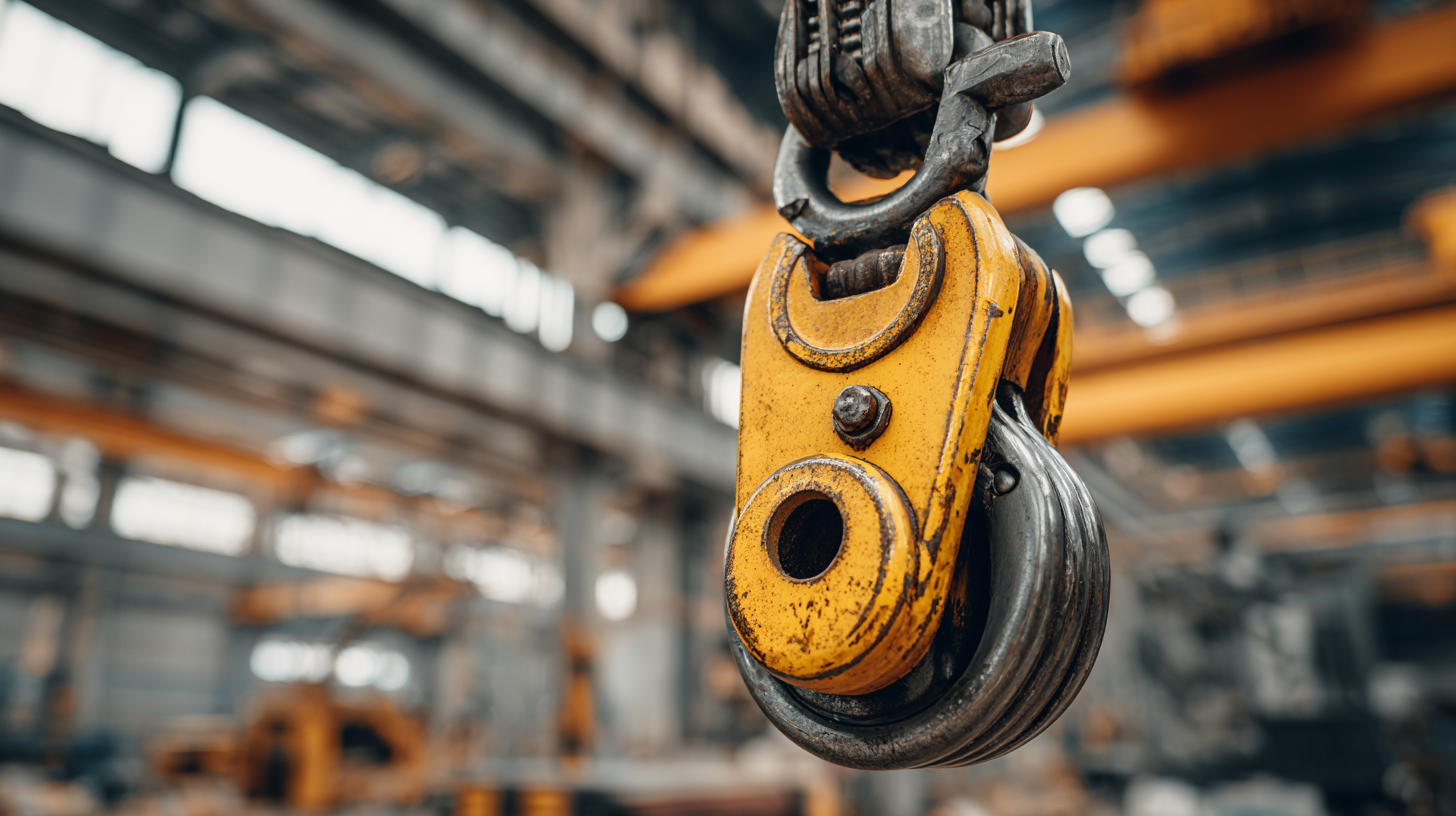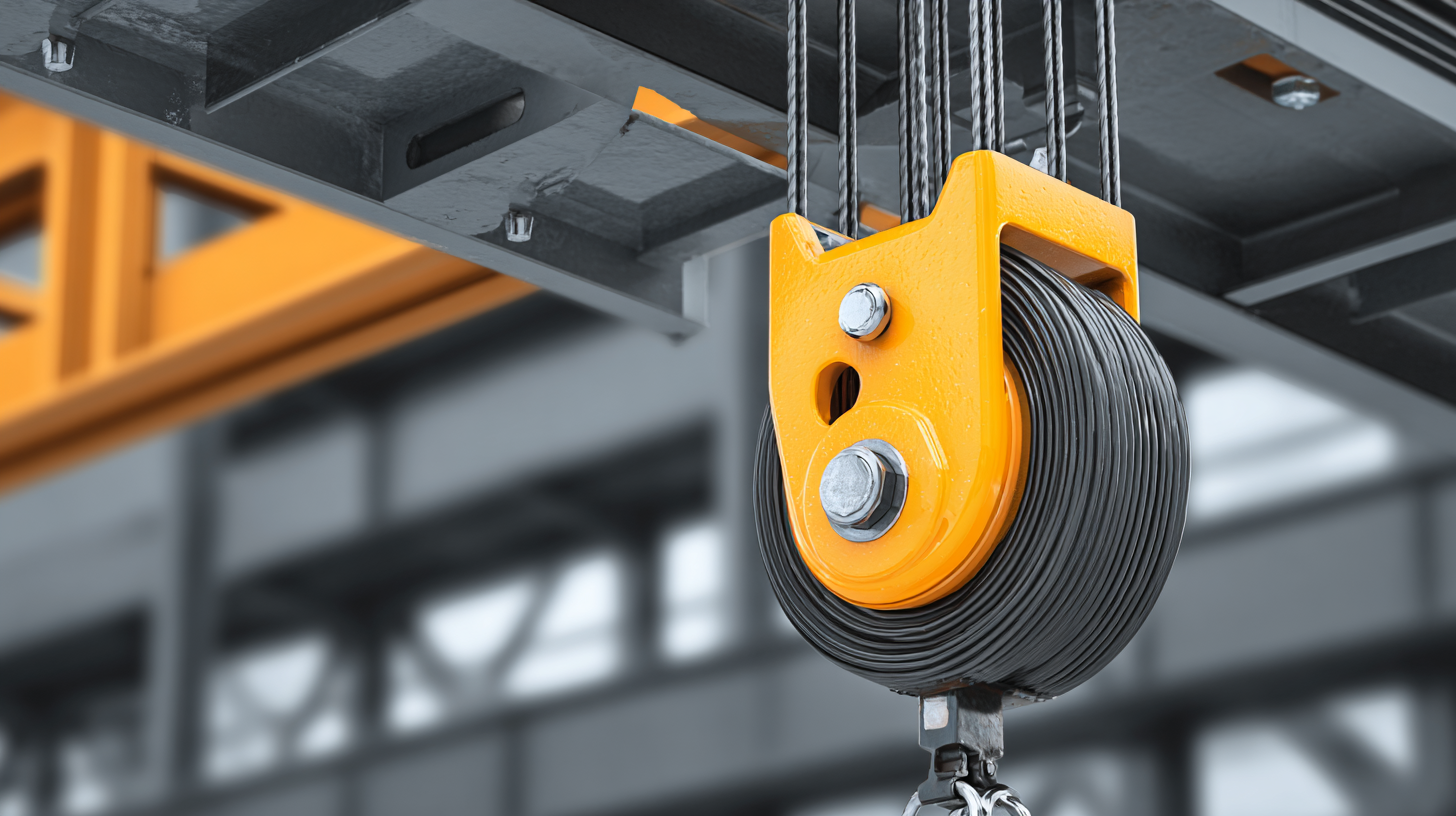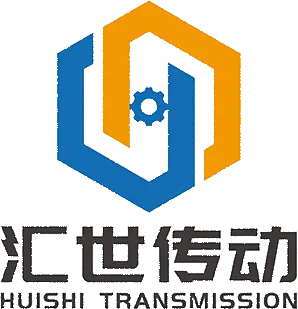 +86-19862000127
+86-19862000127





In the fast-paced realm of industrial applications, efficiency and precision are paramount. One key component that can significantly enhance these elements is the hanging pulley system. These systems not only facilitate the lifting and movement of heavy loads but also streamline processes, making operations safer and more effective. By utilizing the principles of leverage and mechanical advantage, hanging pulleys reduce the effort required to move substantial weights, allowing workers to focus on other critical tasks.

However, the benefits of hanging pulleys extend beyond mere load management. They provide a versatile solution that can be customized to fit various operational demands, adapting to different settings and applications. This versatility enhances workplace productivity and reduces the risk of injuries associated with heavy lifting.
In this article, we will explore practical tips for maximizing efficiency with hanging pulleys, examining their applications in different industrial environments and providing insights on best practices for integration. By understanding how to effectively implement these systems, companies can significantly boost their operational efficiency and gain a competitive edge in the industry.
Hanging pulleys have become an essential component in enhancing load management efficiency within industrial settings. Their ability to redistribute load weight effectively reduces the strain on workers and machinery, fostering a safer workplace and minimizing equipment wear.
According to a report by the Material Handling Industry of America (MHIA), implementing pulley systems can lead to a 30% increase in operational efficiency by optimizing load distribution across multiple points, ultimately resulting in reduced downtime and enhanced productivity.
Moreover, the flexibility offered by hanging pulleys allows for customization in various applications, adapting seamlessly to the specific needs of different industries. Data from the Occupational Safety and Health Administration (OSHA) indicates that systematic use of load management tools, such as pulleys, can decrease workplace injuries related to heavy lifting by up to 50%. As industries continue to prioritize safety and efficiency, the integration of hanging pulleys in load management systems stands out as a pivotal strategy for sustaining high performance in logistical and manufacturing processes.
The global port infrastructure market is anticipated to expand significantly, increasing from $213.38 billion in 2025 to an impressive $290.86 billion by 2032, with a compound annual growth rate (CAGR) of 4.5%. This growth underscores the rising demand for efficient load management solutions across various industrial applications. Strategies like the integration of hanging pulleys can play a crucial role in maximizing efficiency. By improving load handling capacity, industries not only enhance operational efficiencies but also contribute to overall cost savings.

Tips for leveraging hanging pulleys in load management include ensuring proper installation and regular maintenance to prevent wear and tear. Additionally, it is essential to select the right pulley system based on specific load requirements and workplace conditions. Staying informed about the latest innovations in material handling equipment can further propel efficiency, as evidenced by the promising growth rates of related markets such as telematics and automated equipment.
Incorporating advanced telematics solutions into material handling practices is projected to increase market size significantly, reaching USD 33.7 billion by 2034. As industries continue to embrace automation, understanding how to optimally integrate these technologies with existing systems will be crucial for future growth and operational success.
Hanging pulleys have revolutionized load management in various industrial applications by improving efficiency over traditional systems. In conventional setups, loads are often managed using fixed pulleys or manual hoisting mechanisms, which can lead to inefficiencies and increased labor costs. These systems typically require multiple workers to manipulate heavy materials, creating potential safety hazards and reducing overall productivity. The limitations of traditional pulleys include friction losses and restricted maneuverability, which can significantly impact the effectiveness of load distribution.
In contrast, hanging pulley systems offer a more dynamic solution for load management. They utilize advanced engineering to allow for smoother, more efficient movement of heavy objects. By redistributing weight more effectively, hanging pulleys facilitate a significant reduction in the amount of force needed to lift and transport loads. This translates into lower energy consumption and faster operational processes. Additionally, the flexibility of hanging pulleys enhances spatial usage within industrial environments, as they can be integrated into various configurations to accommodate diverse load requirements. Overall, the shift from traditional to hanging pulley systems represents a critical evolution in industrial load management, promoting both safety and efficiency.
This chart illustrates the efficiency of load distribution in traditional systems versus hanging pully systems in industrial applications. The hanging pulley system shows a marked improvement in load management efficiency, reaching 90% compared to 70% for traditional systems.
 Hanging pulleys have revolutionized load management across various industries, enhancing operational efficiency and safety. In the manufacturing sector, for example, a report from the Industrial Equipment Institute highlights that companies implementing hanging pulley systems have reported up to a 35% increase in productivity. This improvement can be attributed to the streamlined processes that allow for easier transportation of heavy materials, minimizing downtime and physical strain on workers.
Hanging pulleys have revolutionized load management across various industries, enhancing operational efficiency and safety. In the manufacturing sector, for example, a report from the Industrial Equipment Institute highlights that companies implementing hanging pulley systems have reported up to a 35% increase in productivity. This improvement can be attributed to the streamlined processes that allow for easier transportation of heavy materials, minimizing downtime and physical strain on workers.
In the construction industry, case studies indicate that hanging pulleys facilitate the safe lifting of heavy equipment and materials. A survey by the National Safety Council shows that organizations that utilize these systems have seen a 20% reduction in workplace injuries associated with lifting operations. This not only contributes to safer work environments but also reflects positively on companies’ bottom lines by reducing insurance costs and enhancing employee morale.
Tips: When implementing hanging pulleys, consider the weight capacity and the distance they need to operate. Proper training for operators on safety protocols is essential to maximize efficiency. Regular maintenance checks can prevent equipment failure, ensuring continuous productivity in operations.
The evolution of hanging pulley technology is marking a significant shift in industrial load management efficiency. Recent innovations focus on lightweight materials and advanced designs that enhance strength and durability, allowing for improved load capacity without compromising on ease of use. Future trends are expected to incorporate smart technologies, including IoT sensors that monitor load dynamics in real-time, ensuring safety and optimal performance in various applications.
**Tips:** Regular maintenance of hanging pulleys is crucial for performance. Inspect for wear and tear, and replace any damaged components promptly. Additionally, ensure that pulleys are properly aligned to prevent uneven load distribution, which can lead to mechanical failure.
Another exciting development is the integration of automation in pulley systems. Automated hanging pulleys can detect load shifts and adjust themselves automatically, minimizing human error and maximizing productivity. As these systems become more prevalent, industries can expect to see a significant reduction in downtime and operational costs, ultimately leading to a more efficient workload management strategy.
**Tips:** Familiarize your team with the operational capabilities of advanced pulley systems to fully harness their benefits. Training employees on the latest technologies can enhance performance and ensure that everyone is on the same page when it comes to load management practices.
| Application Area | Load Capacity (kg) | Pulley Type | Material | Efficiency Improvement (%) |
|---|---|---|---|---|
| Construction | 1000 | Fixed Pulley | Steel | 20 |
| Manufacturing | 1500 | Movable Pulley | Aluminum | 25 |
| Warehousing | 800 | Compound Pulley | Plastic | 30 |
| Mining | 2000 | Block Pulley | Cast Iron | 15 |
| Logistics | 1200 | Adjustable Pulley | Composite | 22 |



